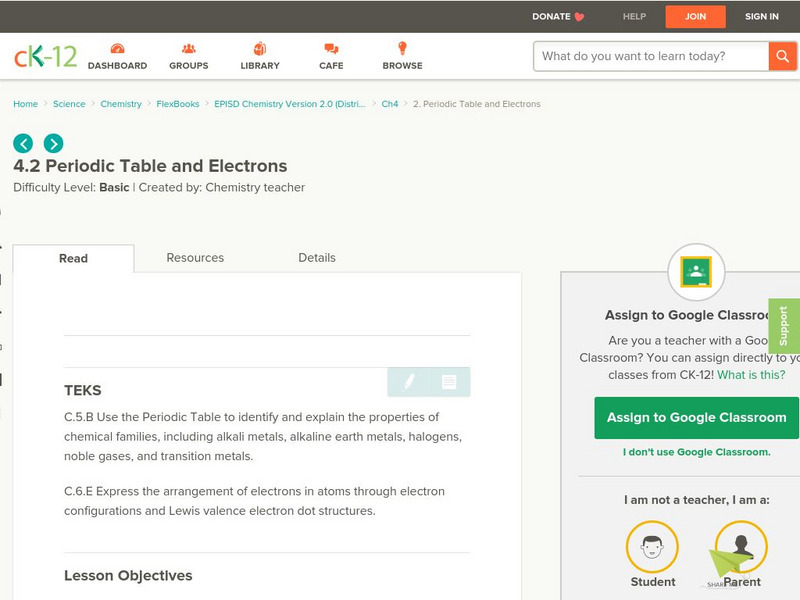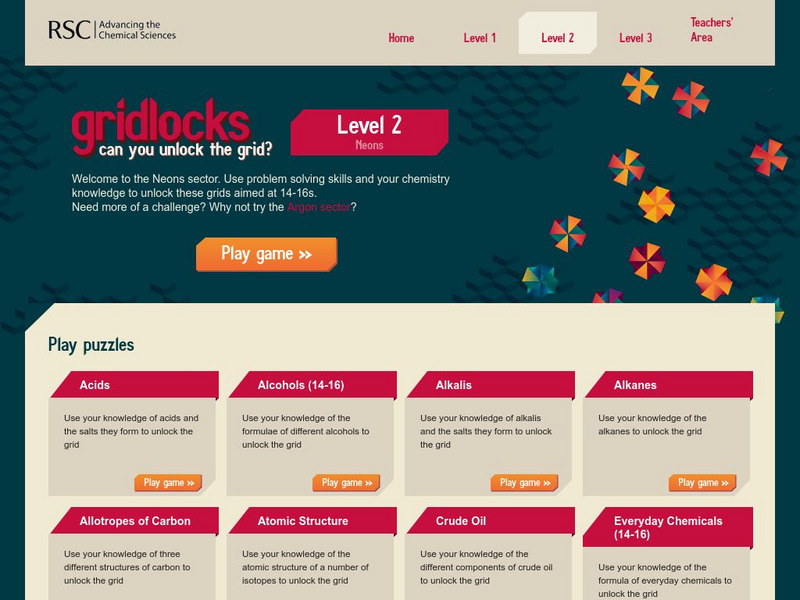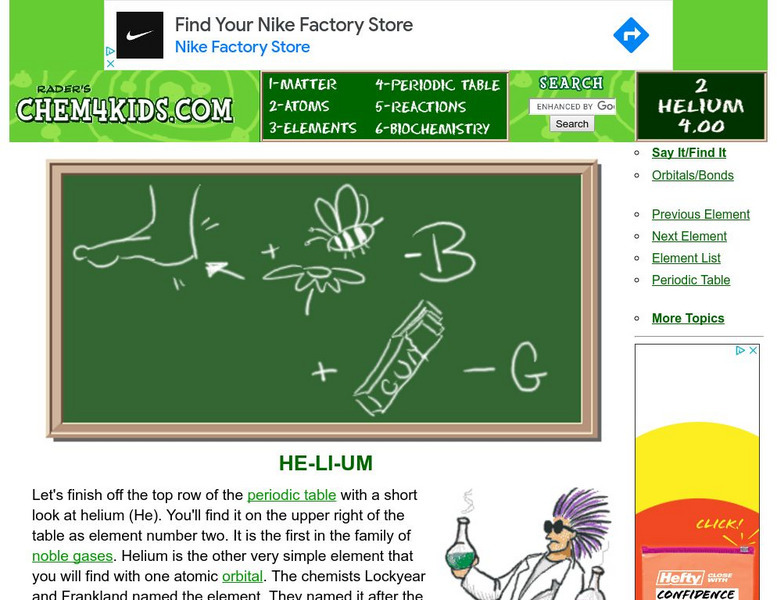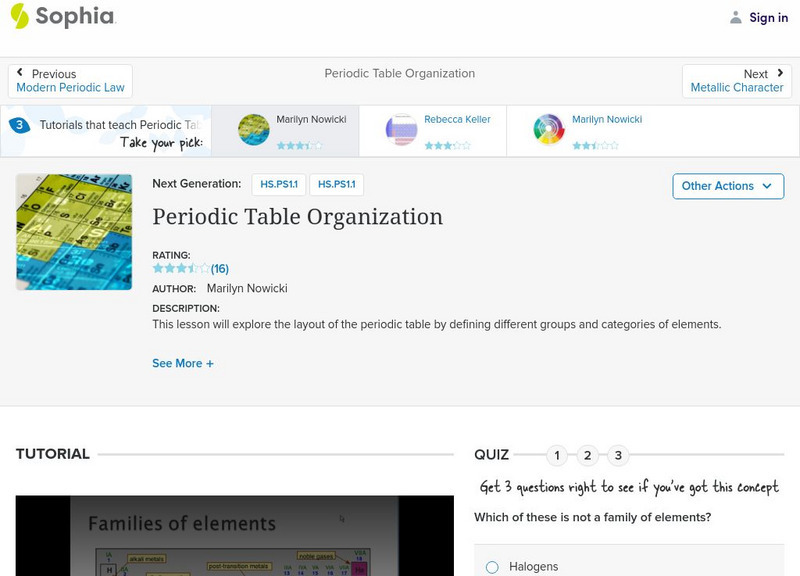CK-12 Foundation
Ck 12: Chemistry: Noble Gases
[Free Registration/Login may be required to access all resource tools.] Covers electronic configuration of noble gases and the reactivity of noble gases.
Chem4kids
Chem4 Kids: The Noble Gases
Get the skinny on the noble gases on the periodic table. Find out why this family is happy, how well they bond, and exactly who is a part of this happy family.
Science Struck
Science Struck: Facts About Noble Gases
Learn how noble gases were discovered, what their properties are, and their uses. Includes a chart listing the six noble gases and some details about them.
Science Struck
Science Struck: Properties of Noble Gases
Read about the properties of the six noble gases - helium, neon, argon, krypton, xenon, and radon.
Ducksters
Ducksters: Chemistry for Kids: Elements: The Noble Gases
Study the noble gases on this site. Learn about where to find them on the periodic table, what elements are in this group, and other facts.
Thomas Jefferson National Accelerator Facility
Jefferson Lab: Element Crossword Puzzle the Noble Gases [Pdf]
Find out what you know about elements by completing this crossword puzzle! This puzzle focuses on elements that are noble gases.
Science Struck
Science Struck: Noble Gas Configuration
Provides the configuration for each of the six noble gases and explains how to write noble gas configurations. Also explains what pseudo-noble gas configuration is.
CK-12 Foundation
Ck 12: Physical Science: Noble Gases
[Free Registration/Login may be required to access all resource tools.] Group 18 elements and their properties.
Other
Atoms in Motion: Noble Gases
The ideal gas law is an empirical law; it's a relationship between the pressure in a system of gases to the volume, the temperature, and the number of gas atoms/molecules in the system. This "law" is valid if the gas atoms/molecules are...
Khan Academy
Khan Academy: Ideal Gases in Medicine
This passage tests your knowledge on the kinetic molecular theory of gases using the five-question quiz.
Famous Scientists
Famous Scientists: William Ramsay
A short biography about William Ramsay, the scientist who discovered the noble gases and received the Nobel Prize in Chemistry in 1904.
CK-12 Foundation
Ck 12: History of the Periodic Table
[Free Registration/Login may be required to access all resource tools.] In this online tutorial students will begin to explain the use of chemical and physical properties in the historical development of the Periodic Table. They will be...
CK-12 Foundation
Ck 12: Electron Configuration and the Periodic Table
[Free Registration/Login may be required to access all resource tools.] In the following online tutorial students will sse the Periodic Table to identify and explain the properties of chemical families, including alkali metals, alkaline...
Vision Learning
Visionlearning: Reactions and Changes: Chemical Reactions
Explanation of Noble gases and of how atoms attempt to fill their outermost valence shells for stability.
University of Victoria (Canada)
A Brief History of the Development of Periodic Table
Provides information on the development of the periodic table under the following sections: In the Beginning, Law of Triads, First Attempts At Designing a Periodic Table, Law of Octaves, Who Is the Father of the Periodic Table?,...
BBC
Bbc: Gcse Bitesize: The Periodic Table
Elements in the same group in the periodic table have similar chemical properties. This is because their atoms have the same number of electrons in the highest occupied energy level. Group 1 elements are reactive metals called the alkali...
Chemicool
Chemicool: Radon
This site provides a set of data tables summarizing the physical and chemical properties and data on radon.
Science Struck
Science Struck: What Is a Plasma Ball and How Does It Work?
Explains how a plasma ball works. It is based on a lamp invented by Nikola Tesla. One needs to be aware of health hazards associated with them. The article includes some amusing tricks that can be done safely with a plasma ball.
Royal Society of Chemistry
Royal Society of Chemistry: Gridlocks: Level 2
A collection of grid puzzles that cover a wide variety of topics in intermediate high school chemistry. These are excellent for topic review and reinforcement. The puzzles can be played online and also downloaded as worksheets. Answers...
Chem4kids
Chem4 Kids: Helium
Here you can find lots of great information about helium. Learn about its electrons, where it exists in nature, and about the element itself!
Sophia Learning
Sophia: Periodic Table Organization: Lesson 2
This lesson will explore the layout of the periodic table by defining different groups and categories of elements. It is 2 of 3 in the series titled "Periodic Table Organization."
Sophia Learning
Sophia: Periodic Table Organization: Lesson 3
This lesson will explore the layout of the periodic table by defining different groups and categories of elements. It is 3 of 3 in the series titled "Periodic Table Organization."
Sophia Learning
Sophia: Periodic Table Organization: Lesson 1
This lesson will explore the layout of the periodic table by defining different groups and categories of elements. It is 1 of 3 in the series titled "Periodic Table Organization."
Ducksters
Ducksters: Kids Science: Elements
Kid's learn about the science of chemical elements. Basic forms of matter made from a single type of atom.


















